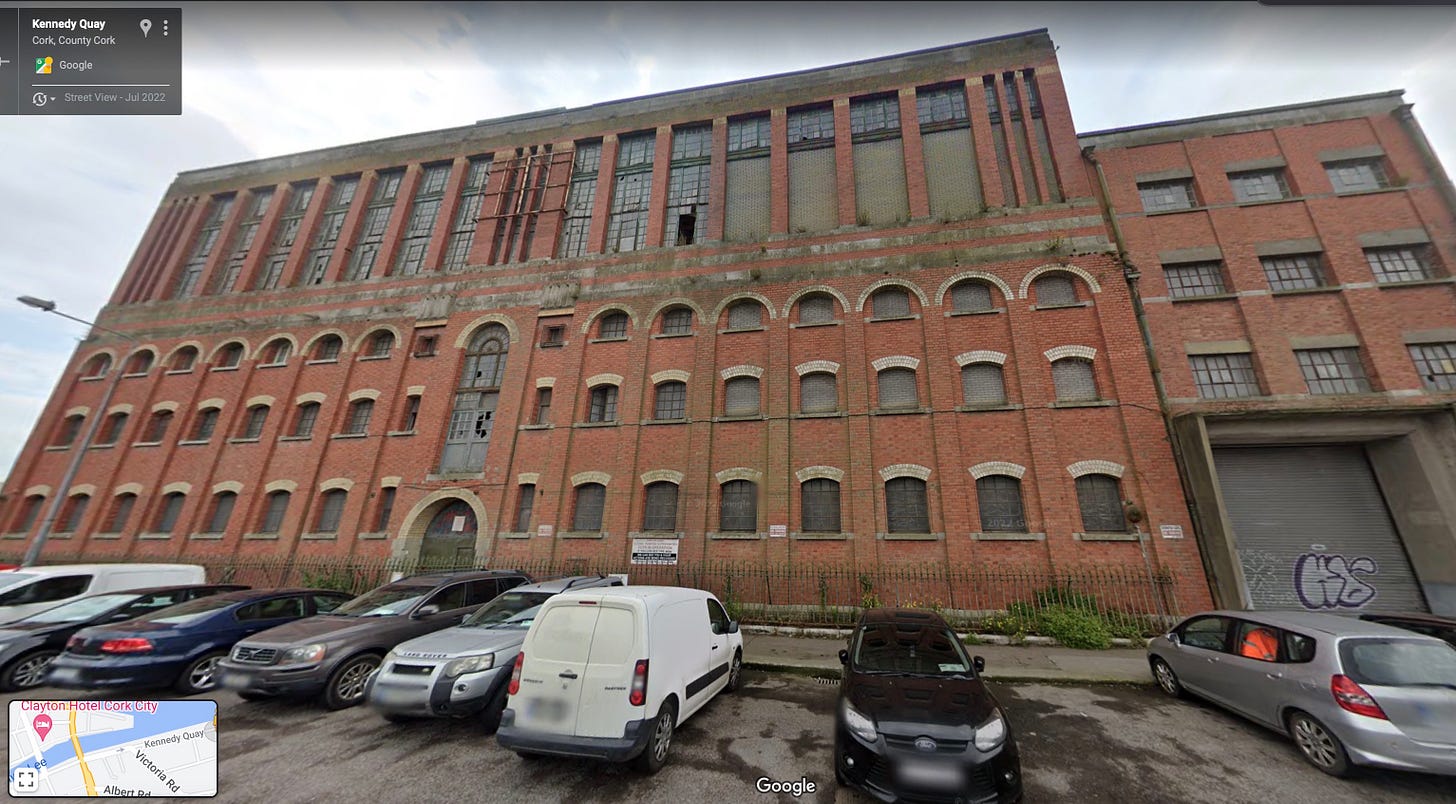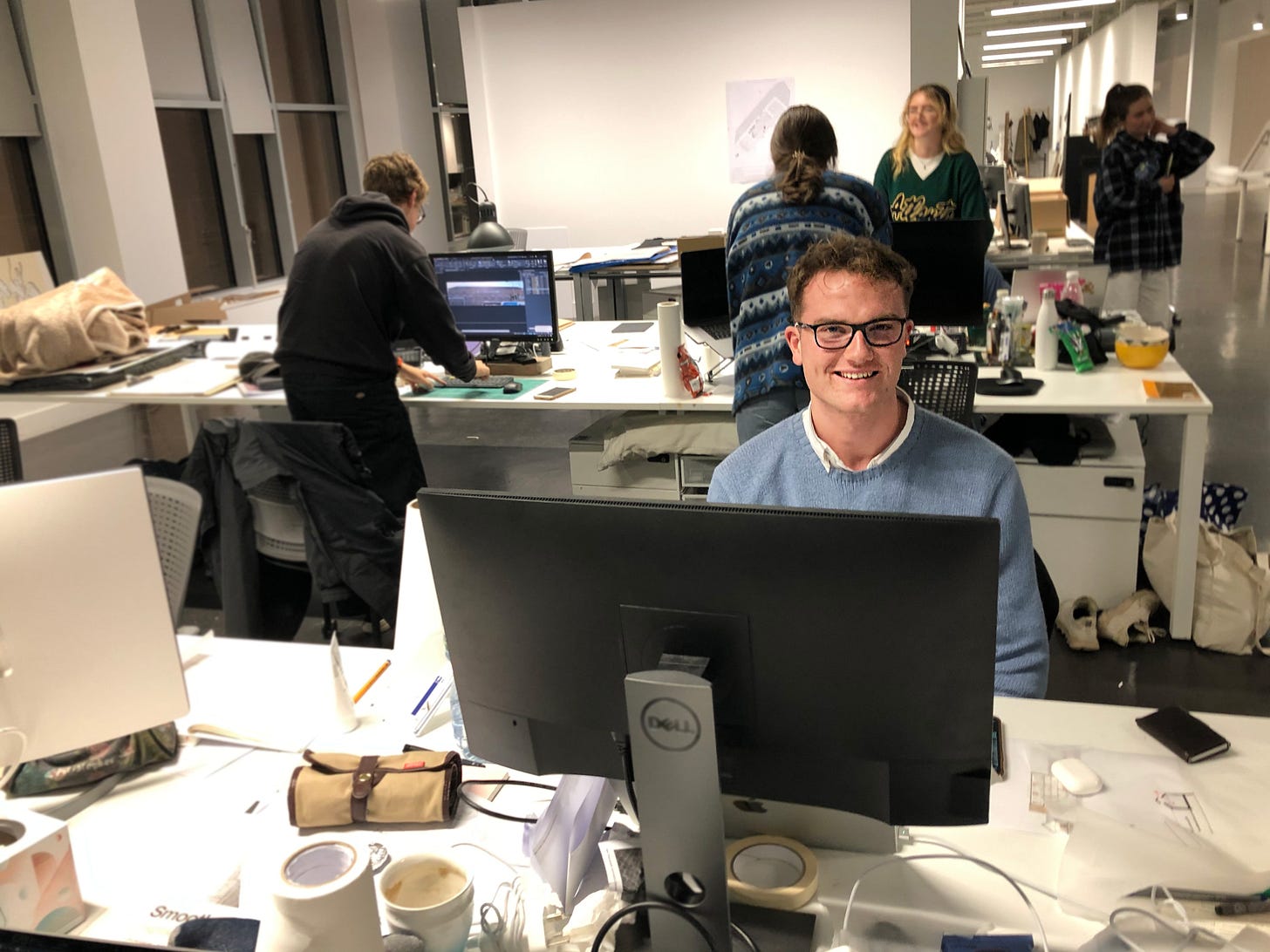84 students hold 24-hour drawing session in protest at Cork's urban decay
Cork architecture students reimagined some of the city's notoriously long-standing derelict sites during a 24-hour drawing marathon held in Cork Centre for Architectural Education.
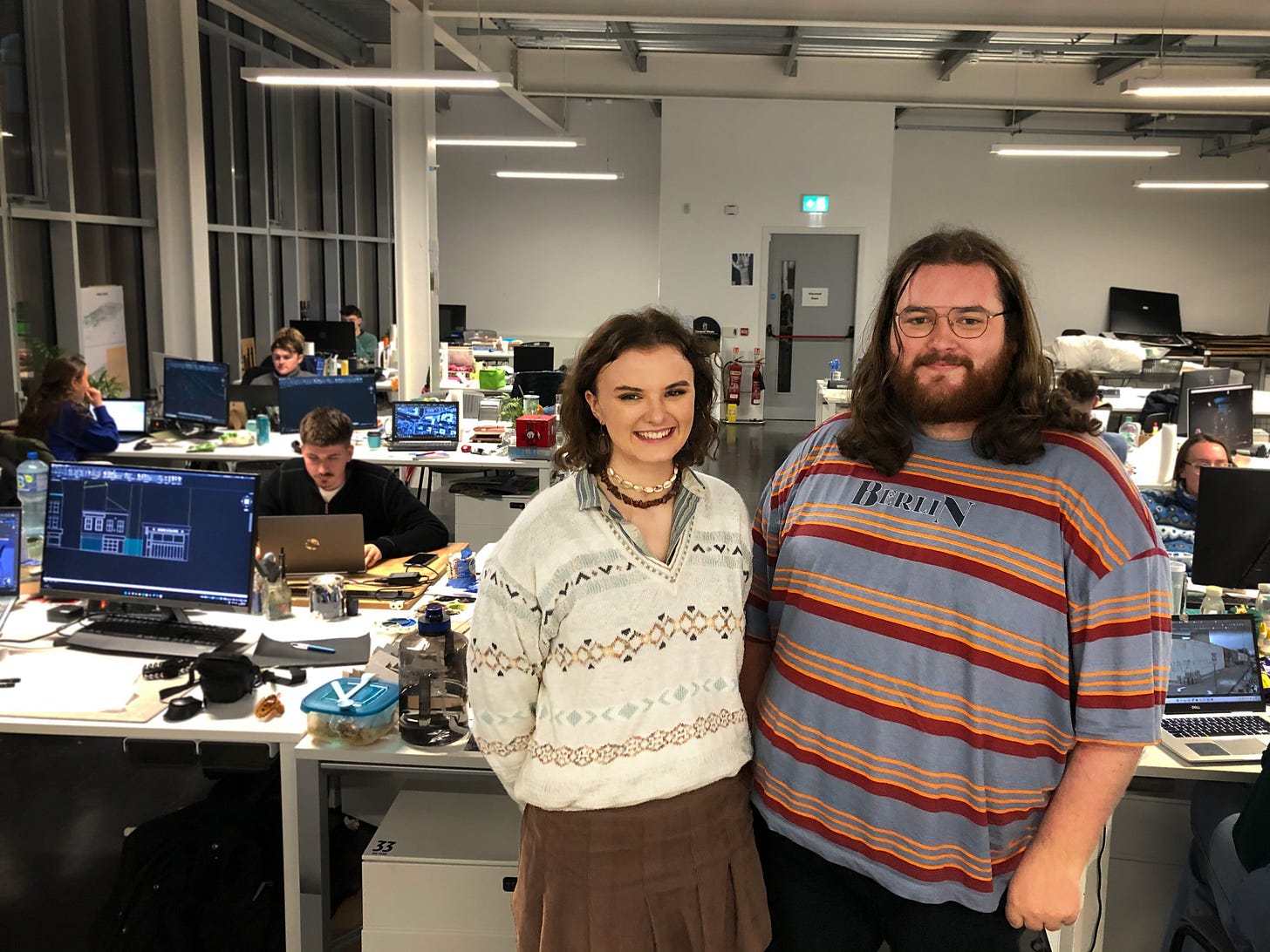
The Odlum’s building as multi-generational housing, the Port of Cork buildings as a crafts and food market, and UCC’s Brooks Haughton site as a public park, with a crèche, housing and private courtyard for children to play.
These were just some of the ideas that students of Cork Centre for Architectural Education (CCAE) came up with during a sit-in 24-hour drawing session held as “an active form of protest against urban decay in Cork City” last night.
The CCAE 24 Hour Dereliction Design Charrette (a charrette is a participatory planning process) ran from 9am on Wednesday 9 until 9am Thursday 10, with each of the 84 students producing an A3 portrait proposal for “the renovation and reimagining of a site currently derelict within the city centre.”
The students hope to compile their work of the past 24 hours into a publication to send to policymakers and architecture firms and to make available to the public.
Fourth Year students Eimear Aherne and Darren O’Connor were two of the protest’s organisers.
“Channel the rage”
Having had guest lectures from housing analyst Dr Rory Hearne and dereliction activists Frank O’Connor and Jude Sherry from Anois Agency over the past two semesters, Eimear said the idea of the Charrette came about to “channel the rage” that students were feeling about extent of city dereliction and land hoarding and turn it into something positive.


“We wanted to tie ourselves with chains to R and H Hall, but that would nearly be too easy when we have the skills and opportunity and the privilege to be in college,” she said. “So we thought we would use the skills we have. It makes people angry seeing the pictures of derelict buildings, but it’s hard to envisage something else so we wanted to do something positive to help people imagine a better, more livable city.”
“People are entitled to believe in better for their surroundings, to have a vision of what Cork could be, because at the moment, they don’t: they just know they don’t like seeing the dereliction.”
10 hours into the project, when Tripe + Drisheen arrived yesterday evening, spirits and attendance were high. First years worked on small-scaled interventions like public parks, pavilions and small retail units, second years focused on housing and third years were working on civic spaces such as theatres, community centres and schools.
Fourth years were working on multifunctional designs for some of the best-known landmark derelict or vacant sites in the city.
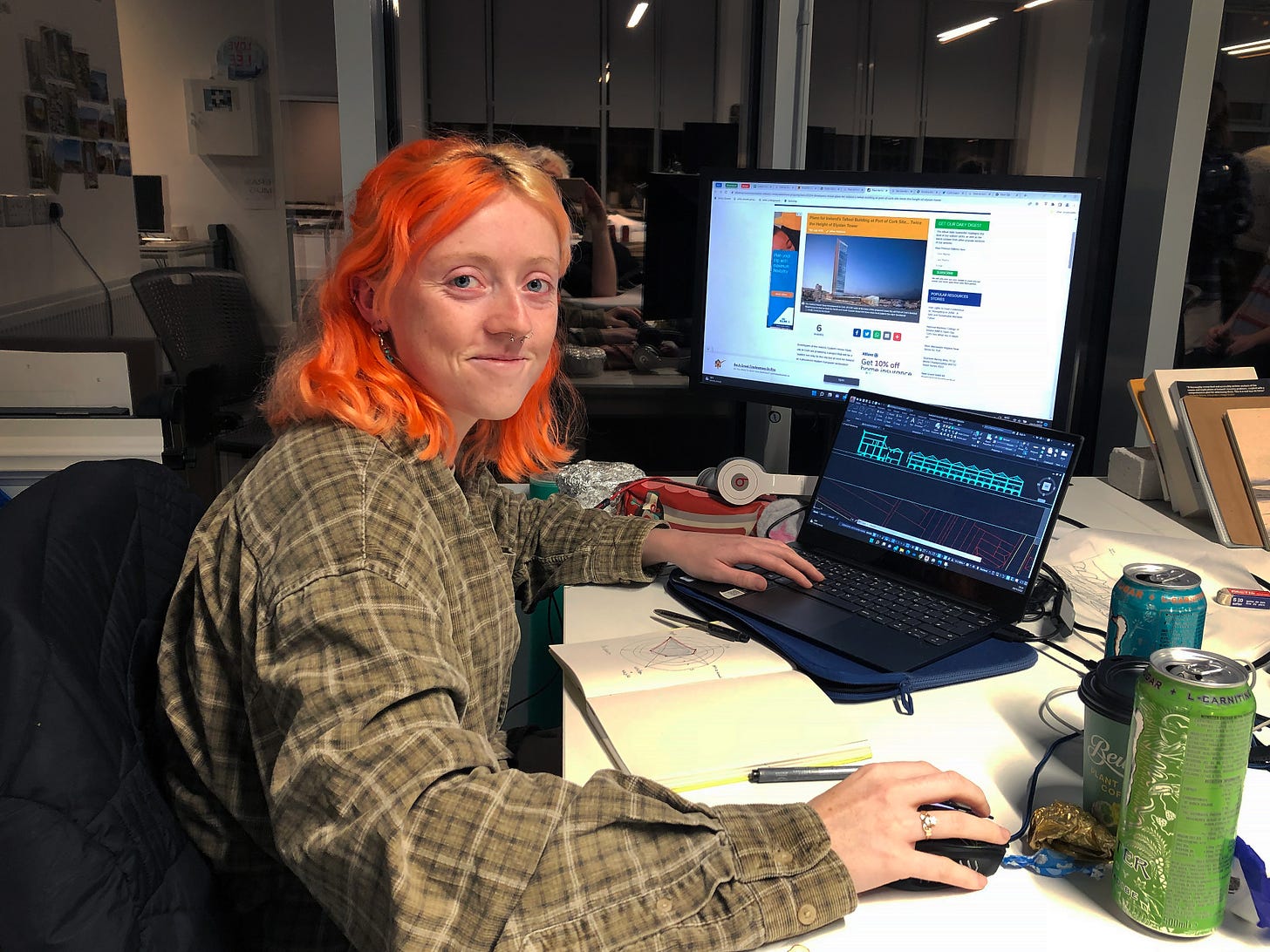
Eadaoin Coghlan was working on a plan for the bonded warehouses at the former Port of Cork HQ, currently earmarked for a 34-storey hotel and renovations to the 18th century warehouses by Tower Holdings Group.
Eadaoin doesn’t believe the current plans will be accessible enough to the public, she told Tripe + Drisheen.
“The proposal for the skyscraper that’s coming out of the back of it is supposed to be the tallest building in Ireland, and it’s a hotel. For who?” she said. “You’ll probably feel like you need to be dressed in a certain way to go in, and that’s just not accessible, really.”
“I feel like you’ll be able to see it from everywhere in the city but it’s not anything to do with people in Cork, doesn’t represent Cork. They’re building luxury hotels and apartments while people are homeless.”
Eadaoin, like her classmates, was planning on staying all night to finish her design, which she said would be based on a market with ample social space and public accessibility.
Darren O’Connor was working on a plan to turn the derelict two storey buildings on the corner of South Main St and Augustine St, which has been empty since it was vacated by LGBT community centre The Other Place in 2015, into a refuge for homeless LGBT Youth, funded by an alcohol-free venue and café on the ground floor.
As one of the organisers, Darren said their lecturers and the college staff had been very supportive of students’ plans for an all-night protest. “It was scary going to them first of all, but they were really supportive,” he said. “They were happy for it to be a student-led project.”
Daniel Quaine was using his all-nighter to re-imagine the Odlum’s building on Kennedy Quay as artist’s studio spaces with multi-generational living on the lower floors.
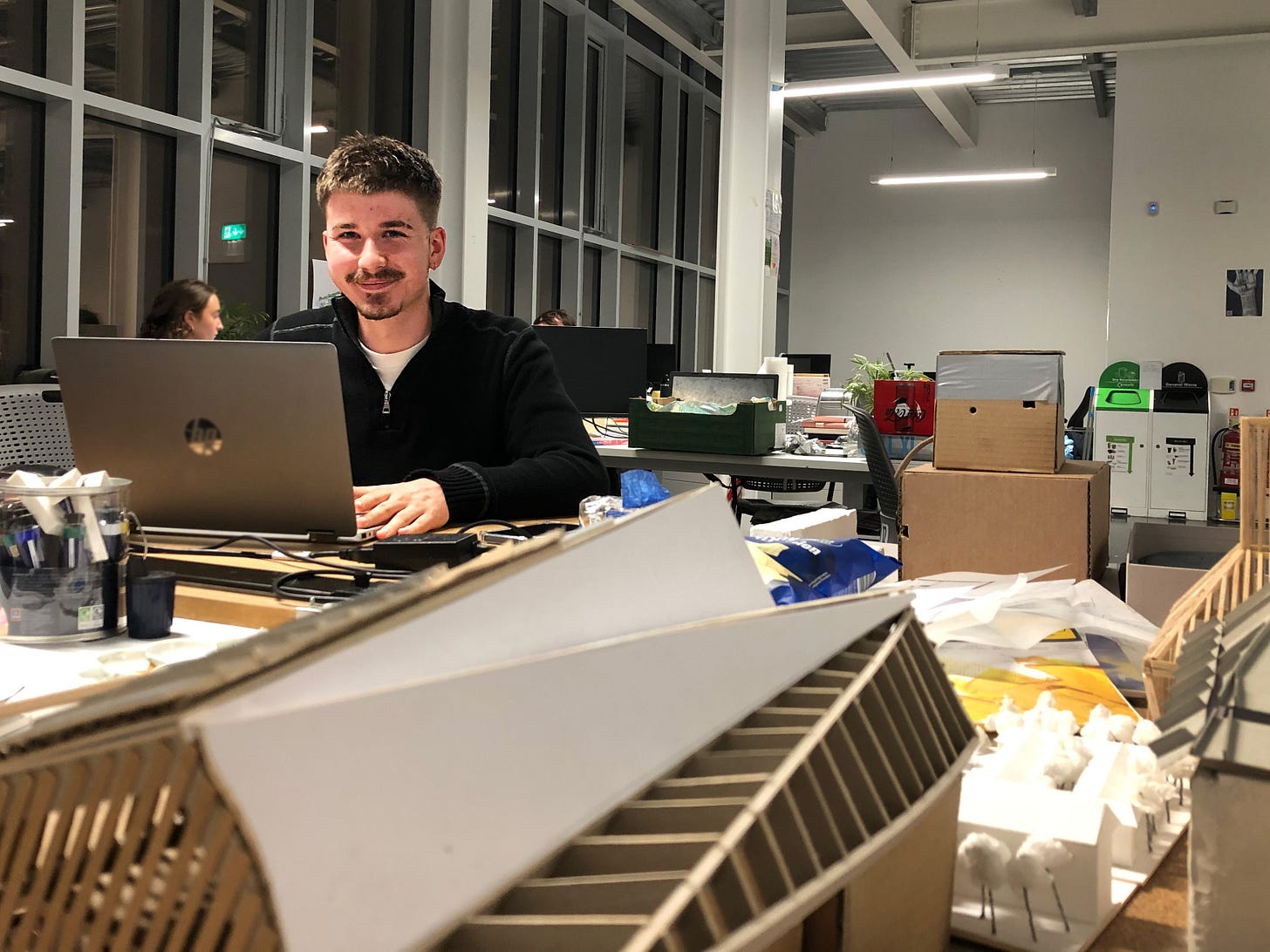
He said he thinks current plans for 450,000sq ft of office space and 80,000sq ft of residential development on Kennedy Quay, centred around the Odlum’s building, are not the best way forward for the site. “Look at the glass box on top of it: they love doing that, putting a glass box on top of something and calling it restoration, like they did at Navigation Quay. If you’ve gone to so much effort to keep the façade, why not keep the rest of the building?”
Students took a break from their drawing for a guest lecture on sustainability and resilience with Greg Keeffe, an expert in Urban Design and Development from Queen’s University Belfast, in the evening.
Eimear Aherne was working on plans for a derelict site that might be familiar to Tripe + Drisheen readers: the UCC-owned Brooks Haughton building and associated buildings on the site’s 1.4 acre footprint.
Plans for a business school for UCC were set to be lodged with Cork City Council in 2022, we reported at the start of the year:
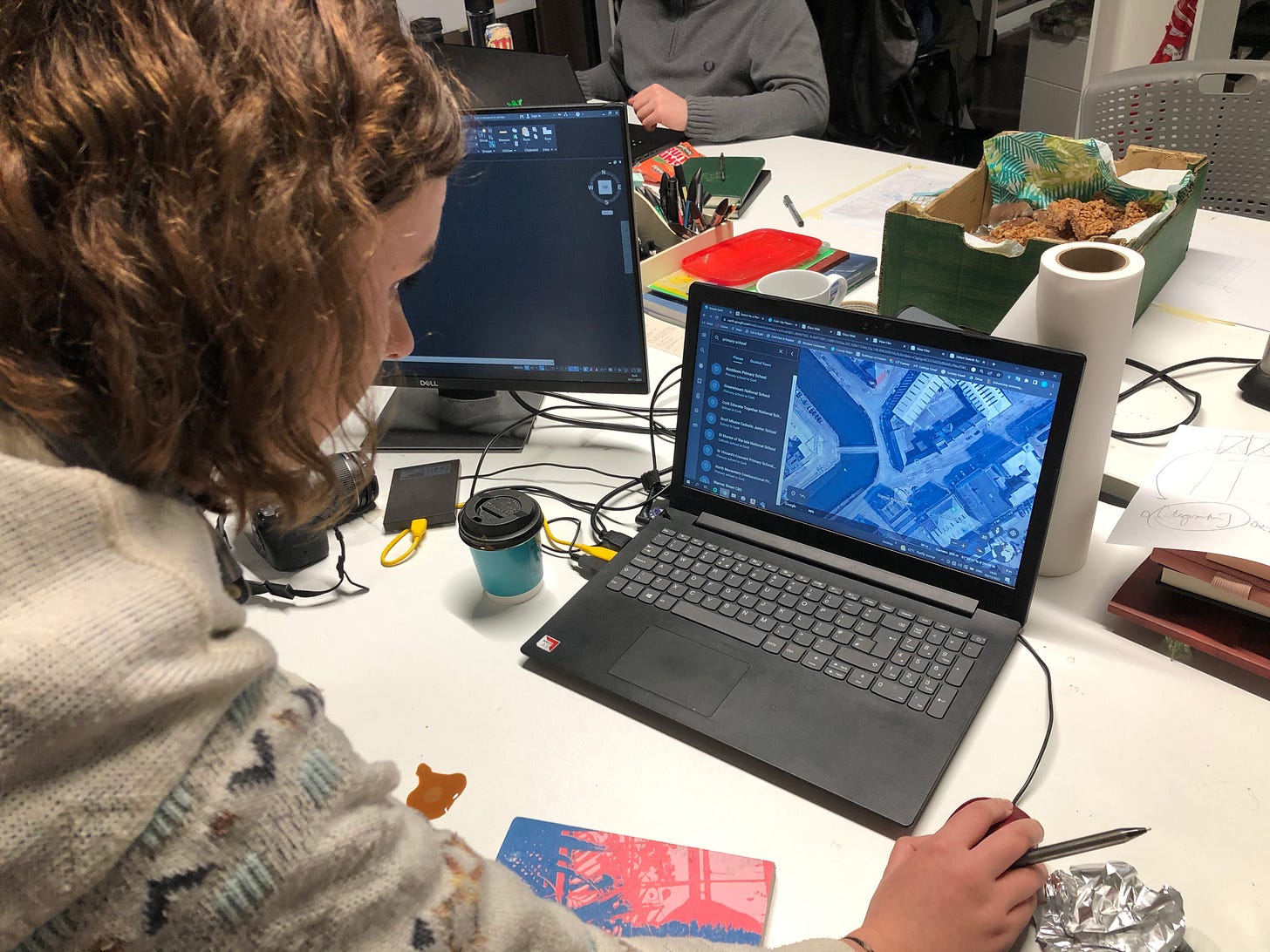
Eimear would like to see a public open green space on the site to compensate for the lack of amenities for city dwellers, with a creche, housing units and a private courtyard to the rear of the site.
She said students were prioritising housing in many of their plans because there was currently an imbalance in favour of office spaces in the city.
“The reason people love Venice or Amsterdam is because the city is occupied: there’s washing hanging out, people are living there.” she said. “The Docklands becoming all offices means everything gets turned off outside of office hours and that makes the place abandoned and unwalkable at night. To make the city more livable, walkable and enjoyable, housing in the city centre must be a priority.”
Meanwhile, Cathal McLoughlin was working on his plans for artists’ workshops and accommodation at some long-derelict warehouses off Blarney Street. He said the demolition of the old Fás offices on Sullivan’s Quay in 2018 had made him believe that Cork city was a place that “doesn’t care about artists. Places for artists to live and work in the city are so rare now.”
While solving dereliction alone won’t solve the entirety of the housing crisis, Cathal believes, he says it would be a big step along the way.
“Any building you can get back, that’s huge,” he said. “Even one house renovated and restored to use is one less family looking for a home. In the grand scheme of things, it won’t solve all the problems over night, but solving dereliction will ease the pressure.”
A selection of some of Tripe + Drisheen’s coverage on dereliction and vacancy in Cork city and county within the past year:





